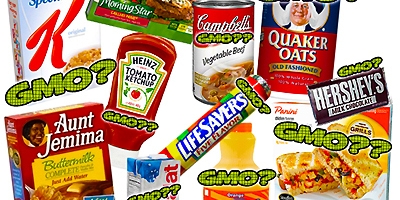
They may hide low on the ingredient list, but in most cases should be given serious thought: trials have shown that each exposure to such substances add up, eventually possibly creating health risks.
Genetically modified additives are used in processed food to:
- Improve color
- Improve taste and texture
- Stabilize
- Preserve, hence lengthen shelf life
Maltodextrin: Used as a thickener for processed soups, candy and soda, it is a starch that adds flavor, stabilizes and can even be used as a fat substitute.
Dextrose: Usually derived from corn, it is used in sodas, sport drinks, processed baked goods, and High Fructose Corn Syrup (along with other additives like glucose) to sweeten products.
Sorbitol: With a low level of sweetness, it is used in sugar free products (chocolate), candies and bakery items (processed pastries); it holds moisture in tack and preserves freshness in most shelf items.
Citric Acid: Usually derived from GM crops and consistently under the spotlight because many organic products are using it as a preservative. Organic certifiers require that enzymes used to convert starch into sugar must derive from non GM micro-organisms.
Lecithin: Lecithin is soy and most soy is not only sprayed pesticides, but genetically modified. Lecithin is extremely processed: it is a byproduct of soybean oil, bleached with hydrogen peroxide then dried, and used as an emulsifier. It can be found in processed puddings, chocolates, corn oils, soy oils and vegetable oils. It is the ingredient that allows nut butters to spread. Organic soy lecithin is available, but since organic goods need to be 95% organic, the remaining 5% open the door to GM additives.
Many countries strongly oppose genetically modified food. The European Union has strict regulations against GM crops and even in the US, 87% of Americans agree that GM products must be labeled.

No comments:
Post a Comment